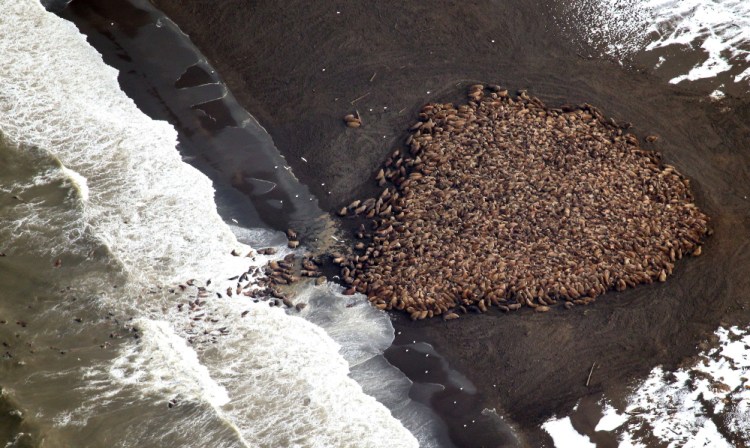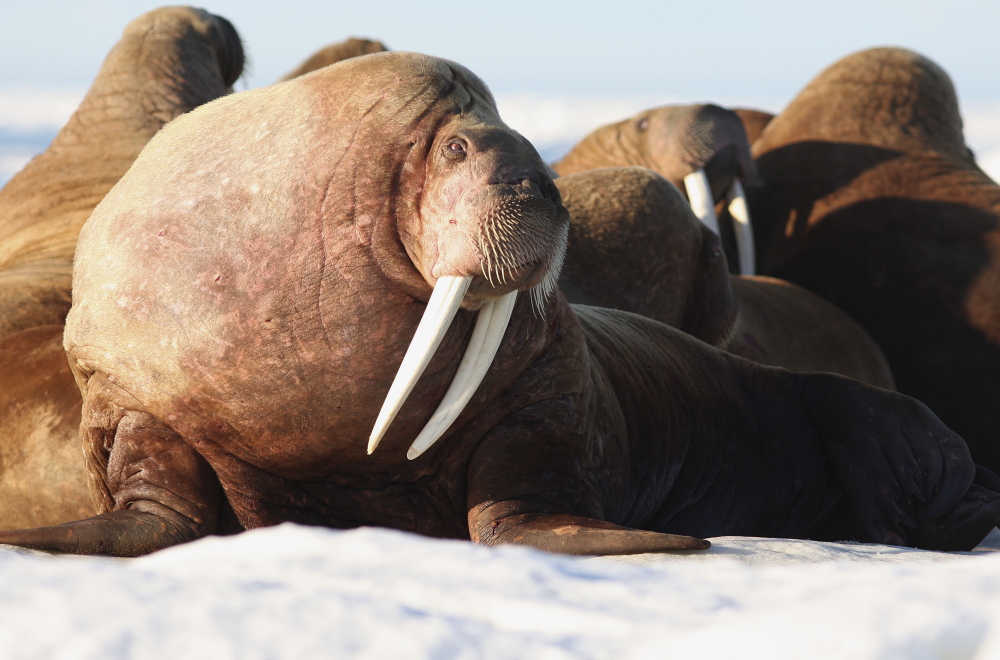ANCHORAGE, Alaska — Pacific walrus that can’t find sea ice for resting in Arctic waters are coming ashore in record numbers on a beach in northwest Alaska.
An estimated 35,000 walrus were photographed Saturday 5 miles north of Point Lay, according to the National Oceanic and Atmospheric Administration.
Point Lay is an Inupiat Eskimo village 300 miles southwest of Barrow and 700 miles northwest of Anchorage.
The enormous gathering was spotted during NOAA’s annual arctic marine mammal aerial survey conducted with the Bureau of Ocean Energy Management, the agency that oversees offshore lease sales.
Andrea Medeiros, spokeswoman for the U.S. Fish and Wildlife Service, said walrus were first spotted Sept. 13 and have been moving on and off shore. Observers last week saw about 50 carcasses on the beach from animals that may have been killed in a stampede.
The gathering of walrus on shore is a phenomenon that has accompanied the loss of summer sea ice.
Pacific walrus spend winters in the Bering Sea. Females give birth on sea ice and use it as a diving platform to reach shellfish on the shallow continental shelf.
Unlike seals, walrus cannot swim indefinitely and must rest. They use their tusks to pull themselves onto ice or rocks.
As temperatures warm in summer, the edge of the sea ice recedes north. Females and their young ride the edge of the sea ice into the Chukchi Sea, north of the Bering Strait.
In recent years, sea ice has receded beyond shallow continental shelf waters where walrus cannot dive to the bottom.
Young animals are vulnerable to stampedes when a group gathers nearly shoulder-to-shoulder on a beach. Stampedes can be triggered by a polar bear, human hunter or plane. The carcasses of more than 130 mostly young walruses were counted after a stampede in September 2009 at Alaska’s Icy Cape.
The World Wildlife Fund said walrus have also been gathering in large groups on the Russian side of the Chukchi Sea.
“It’s another remarkable sign of the dramatic environmental conditions changing as the result of sea ice loss,” said Margaret Williams, managing director of the group’s Arctic program.
“The walruses are telling us what the polar bears have told us and what many indigenous people have told us in the high Arctic, and that is that the Arctic environment is changing extremely rapidly and it is time for the rest of the world to take notice and also to take action to address the root causes of climate change.”
Copy the Story LinkSend questions/comments to the editors.




Success. Please wait for the page to reload. If the page does not reload within 5 seconds, please refresh the page.
Enter your email and password to access comments.
Hi, to comment on stories you must . This profile is in addition to your subscription and website login.
Already have a commenting profile? .
Invalid username/password.
Please check your email to confirm and complete your registration.
Only subscribers are eligible to post comments. Please subscribe or login first for digital access. Here’s why.
Use the form below to reset your password. When you've submitted your account email, we will send an email with a reset code.